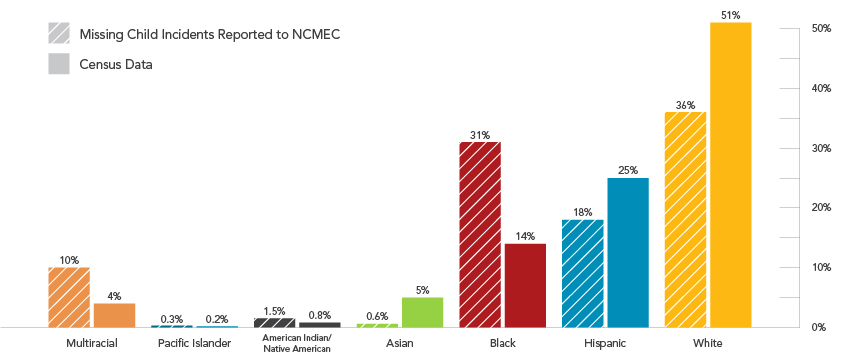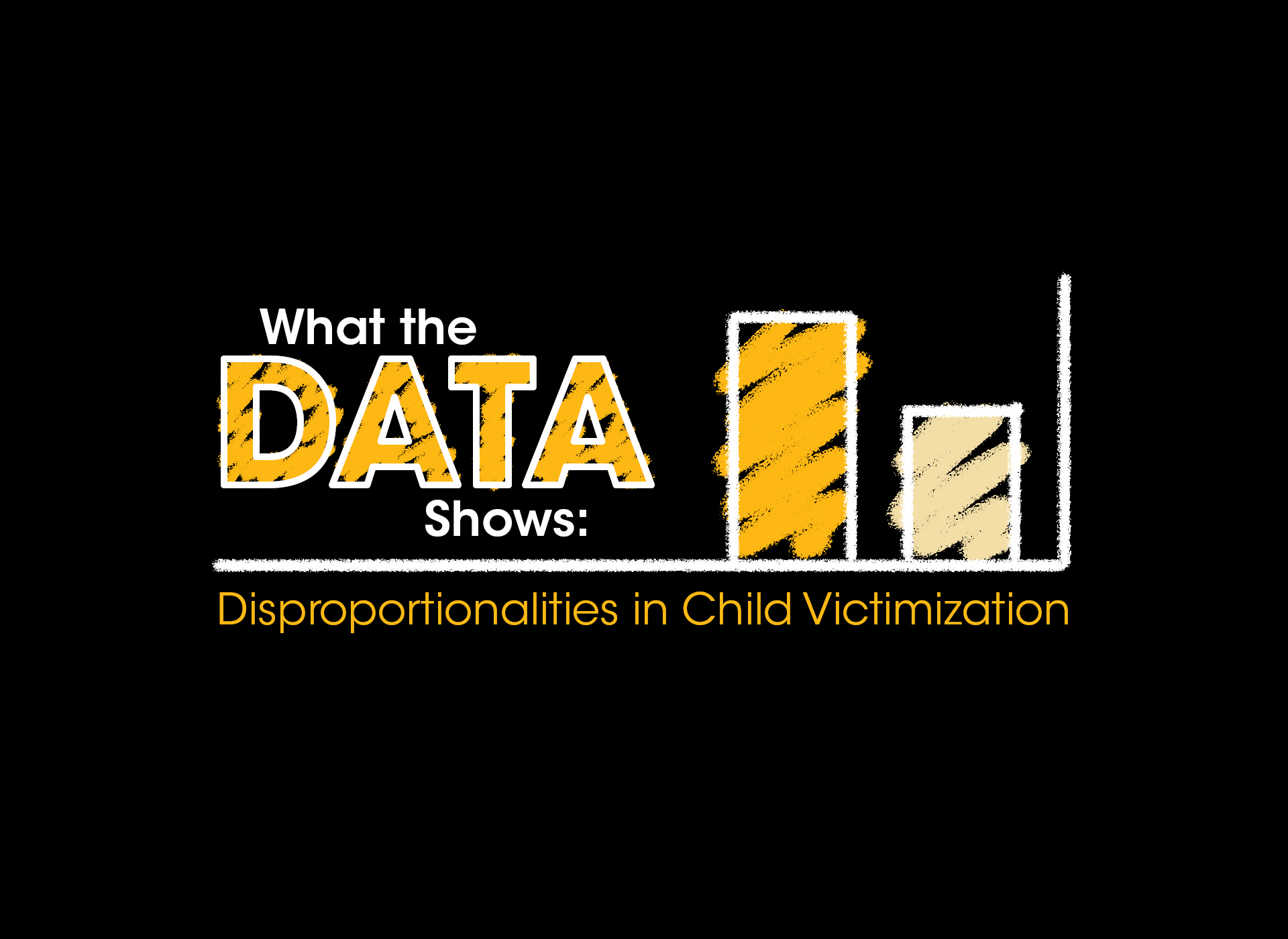What the Data Shows: Disproportionalities in Child Victimization
The National Center for Missing & Exploited Children’s (NCMEC) mission is to help find missing children, reduce child sexual exploitation, and prevent child victimization. As the nation’s clearinghouse and comprehensive reporting center for issues related to the prevention of and recovery from child victimization, we regularly analyze data trends because understanding the risks that children face is critical to protecting them.
A comparison of the reports of missing children made to NCMEC between 2016-2020 and recent census data* indicates that Black and Native American children are disproportionately represented among missing children. Of the children reported missing, 31% were Black, but only 14% of the U.S. population is Black; 1.5% of the children reported missing to NCMEC were Native American, but only .8% of the population is Native American; and 10% of missing children were Multiracial compared to 4% of their representation in the census.

Reports of missing children made to NCMEC between 2016-2020 and recent census data*.
In recent years, greater attention has been focused on children who are missing from state care. These children experience a variety of risk factors that can make them more vulnerable to going missing or forms of exploitation. Of the cases of missing children reported to NCMEC between 2016-2020, 80% of them were missing from care. NCMEC data also indicated that some communities were disproportionately represented in these cases.
We believe the racial and ethnic disproportionalities in the missing child cases reported to NCMEC, particularly those children missing from care, are in part due to the systemic and historical inequities that people of color, Native American and Indigenous communities face in society.
NCMEC is committed to remaining an equitable, inclusive, survivor-centered, and trauma-informed organization. We will continue to leverage our resources, data, and information to help address these disparities by:
- Pursuing deeper understanding of possible disparities in cases of missing and sexually exploited children.
- Supporting our staff and partners in the media, public safety, and child-serving fields by sharing strategies to reduce the impact of biases in providing services and support to families.
- Engaging diverse stakeholders through our family advocacy and public-private partnerships to deliver services and resources.
We hope that our own purposeful work alongside that of our partners will help to ensure more positive outcomes for the children and families we serve. NCMEC pledges to continue to work together with our law enforcement partners, stakeholder communities, and child-serving organizations that share our commitment to addressing ethnic and racial inequities to help keep children safe and protected.
* Annual Estimates of the Resident Population by Sex, Single Year of Age, Race, and Hispanic Origin for the United States: April 1, 2010 to July 1, 2019, U.S. Census Bureau, Population Division, accessed January 12, 2021.
